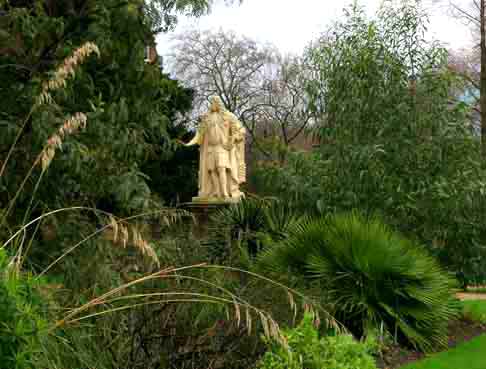
The statue of Sir Hans Sloane standing in the centre of the Garden
Environments for supporting different types of plants were built, including the pond rock garden, constructed from a variety of rock types, namely stones from the Tower of London, Icelandic lava (brought to the garden by Sir Joseph Banks in 1772 on a ship named St. Lawrence), fused bricks and flint. This curious structure has been listed Grade II* and is the oldest rock garden in England on view to the public. It was completed on 16th August 1773.
In 1848 Robert Fortune used Wardian cases, which are rather like miniature greenhouses, to transport seedlings of Camelia sinensis (tea) from China leading to the establishment of the tea industry in India.
In 1876 the Garden enlarged its educational aspirations by deciding to run a lecture course for young women who were training as botany teachers.
At the end of the 19th century the trustees of the City Parochial Foundation agreed to take over the running of the Garden from the Society of Apothecaries.
In 1983 The Garden became a registered charity and open to the general public for the first time.
The Chelsea Physic Garden has developed a major role in public education focusing on the renewed interest in natural medicine. A Garden of World Medicine which is Britain's first garden of ethnobotany (or the study of the botany of different ethnic groups and indigenous peoples) is laid out together with a new Pharmaceutical Garden.
More history of the Garden can be found on the page about the Historical Walk
